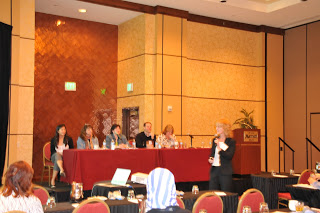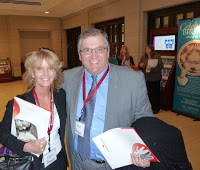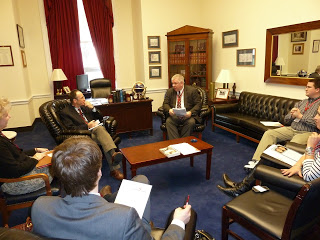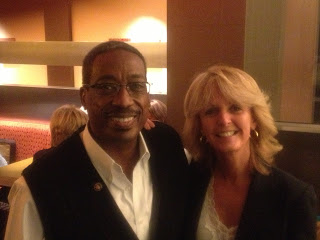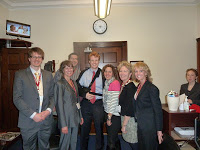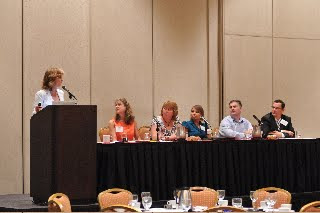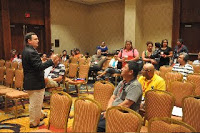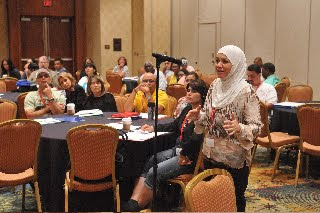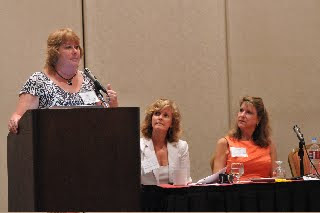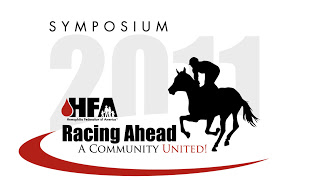Pulse on the Road in Colorado!
The Colorado Chapter of the National Hemophilia Foundation is flourishing under the leadership of Amy Board, executive director and her team. We had an excellent turnout for our Pulse on the Road insurance symposium yesterday, presented at the Colorado Chapter’s Educational Dayz! 2013.
Friday night started with a fun ice-breaker, dinner and then a great presentation in joint care by my friend Jeff Kallberg, a physical therapist who has hemophilia. This was followed by a carnival in the ballroom. There were lots of children and their families attending, so the whole event was kid-friendly, of course!
On Saturday, I was joined by Michelle Rice, policy director of NHF and Frank Quintieri of Baxter Healthcare to present Pulse on the Road. Frank gave an overview of the Affordable Care Act (ACA). In a quick review he stated that the ACA, passed in 2010:
- Lifts lifetime & annual caps
- Dependents stay on parents’ plan till age 26
- Eliminates pre-existing condition exclusions
- Creates “marketplaces”
- Allows states to expand Medicaid eligibility
Frank explained each of these changes in detail, all of which was good news for people with chronic disorders. The audience had excellent questions in response to his talk, from how does the ACA affect the self-insured plans, to what happens when a child with hemophilia turns 26 and then doesn’t have insurance. We all agreed that this was one of our most inquisitive audiences to date!
I spoke after a break about the importance of choosing a healthcare plan: you need to know terms used by payers, where factor is charged on your plan (major medical or pharmacy?), and what are the costs versus the benefits of the plan? Beware of what is covered in–network versus out-of-network. And most of all, know when your open enrollment period is—the time when your employer chooses a new plan. We all had a great laugh when audience member Maryann called it open season; “Like deer hunting?” I replied.
Michelle Rice presented NHF’s excellent Insurance Toolkit, designed to walk you through a hypothetical patient who wants to compare two plans. It’s detailed, challenging and incredibly useful. If you can do this Toolkit, you are ready to compare plans under the ACA through the marketplaces. The audience dug right in and got to work, using the calculators we supplied. And right away people caught on that there was a trick question when it came to plugging factor costs in! Impressive!
In summary, we reiterated that:
- Everyone must have health care coverage in 2014
- You may need to select your coverage in a marketplace
- You must read your insurance policy annually
Hats off to Amy and her team for an excellent weekend, and for being such gracious hosts for us. We’re excited to see Colorado flourishing!
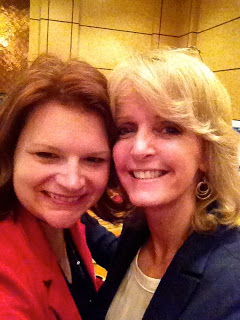

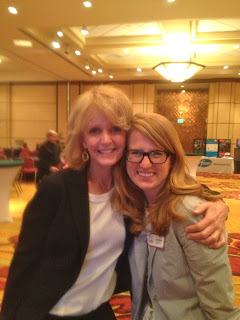
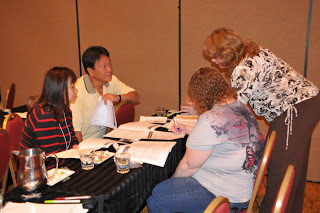

No book review this time. Colorado patient Chris Bombardier, who summited Mt. Aconcagua in Argentina in February (first person with hemophilia ever to do this!) and girlfriend Jessica Carter kindly spent the day with me Sunday to take me hiking and caving. The original plan was to hike 14,000 ft Pike’s Peak but conditions were very bad—high winds and lots of snow. But we had a great day hiking the Gardens of the Gods, and later visiting the Cave of the Winds. Beautiful rock formations under ground, a mile of stunning beauty including stalactites, stalagmites, columns, cave popcorn, cave bacon and soda straws. Colorado has tremendous natural beauty: go see it if you can!



